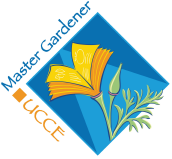The purpose of California SB 1383 is to decrease greenhouse gas emissions and slow climate change by reducing the number of organic materials ending up in landfills. This procurement requirement begins January 1st, 2023, and mandates residences and businesses to sort and separate organic waste, such as food scraps and yard waste, to be collected by their local jurisdictions.
Every year, Californians dump food scraps and yard trimmings into landfills, comprising nearly half of the materials that land there. Disposing of this organic waste instead of composting it fuels 20% of California’s methane emissions and methane is a super pollutant that is 84 times more potent than carbon dioxide.
According to the CalRecycle program with CA.gov, this organic waste will then be converted into compost, mulch, biofuel, and electricity. This legislation also aims to divert organic materials away from landfills, recovering 20% of edible food and redirecting it to food-insecure residents of California. A win-win for people and the environment.
Simple Composting Process
Compost is the product of decomposed biodegradable organic matter. Composting is simple: you can commit to the process of composting your food scraps and yard clippings or buy ready-made compost such as our Organic Green Waste Garden Compost.
Why use compost? Because it contributes to a healthy soil brimming with living microorganisms, increases crop yields, and helps the soil retain its moisture.
To do composting yourself, you’ll need DIY or buy a composting bin and begin collecting organic waste, keeping in mind that the process can take 3-8 months. Once you have enough food scraps and yard clippings, you’ll start feeding it into your bin, keeping food scraps buried in the center so it decomposes. Next, maintain the compost by mixing or turning it weekly and keeping it moist. Finally, harvest your compost by sifting out large unfinished materials.
To save time, you can purchase any of our rich, living organic garden composts from Lyngso. Before planting, you’ll add 2-4 inches of compost into the soil for annual edible beds. Fruit trees and perennial food crops require compost every 6 months.

Fall Mulching Tips
Mulch is any organic or inorganic material that is spread over the soil’s surface with the benefits of moisture and temperature retention, erosion prevention, weed suppression, and improving soil life and health. Organic mulch is hardwood and softwood chips, bark, leaves, grass clippings, evergreen needles, compost mixes, and various other plant byproducts. Inorganic mulch is used more for aesthetic purposes and consists of rock, stone, lava rock, crusher dust, glass, and other manufactured materials.
Due to its ability to regulate soil temperature, you can probably tell that mulching in fall is a great idea to protect your plants from thermal shock, and keeping the soil moist is important for mitigating the effects of droughts.
You’ll want to add a layer 2-3 inches thick around the base of plants and trees but be sure to leave a gap at the base of the trunk and do not pile on the mulch against the flare of the tree. You can follow the rule of 2 inches deep and 2 inches away. Applying too much mulch around the base can lead to pests and rot.
Check out our Premium Arbor Mulch, Small Fir Bark and Walk on Bark for all your mulching needs.
For cities and counties that qualify for SB 1383 grant, consider our Composted Mulch. Please note: this product is currently only available to customers qualifying for SB 1383.
Cover Crop Benefits
Cover crops are a long-term, sustainable solution to slow erosion, improve water availability, control pests and diseases, add nutrients to the soil, block weed growth, and attract pollinators. Cover crops, also known as ‘green manure,’ are sown in a garden bed when the season for edible crops ends. Once summer crops are retired and removed for the season, you can add cover crops such as grains, legumes, and broad leaves.
The cover crops will grow during the fall and winter seasons, and you can either “chop and drop”, spade, plow or till them into the soil in the Spring. Legume cover crops will add nitrogen to the soil. When you turn cover crops under, they add nutrients to the soil. All gardens require organic matter to maintain good bacteria, fungi, and other microorganisms for healthy fertile living soil.
Learn more about Everything You Need to Know About Cover Crops in our recorded class.
We hope these tips inspire you to do your part in supporting the environment and reducing human impacts on climate change while enjoying a long-lasting healthy garden for years to come.
If you have questions about our compost, mulch or need assistance with sustainable gardening, our family at Lyngso is here to help! Please don’t hesitate to contact us.















